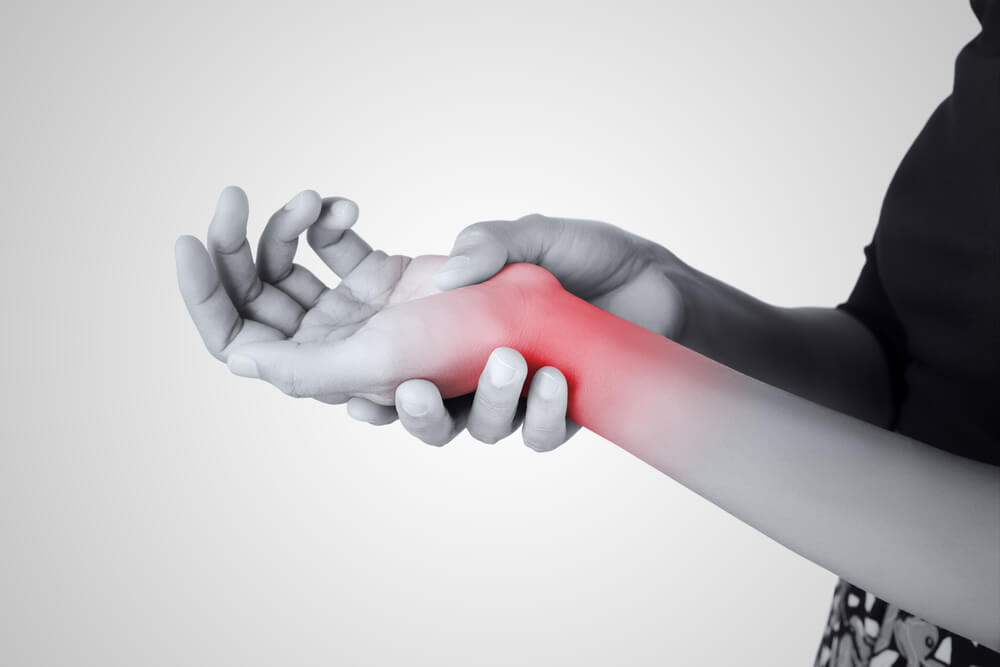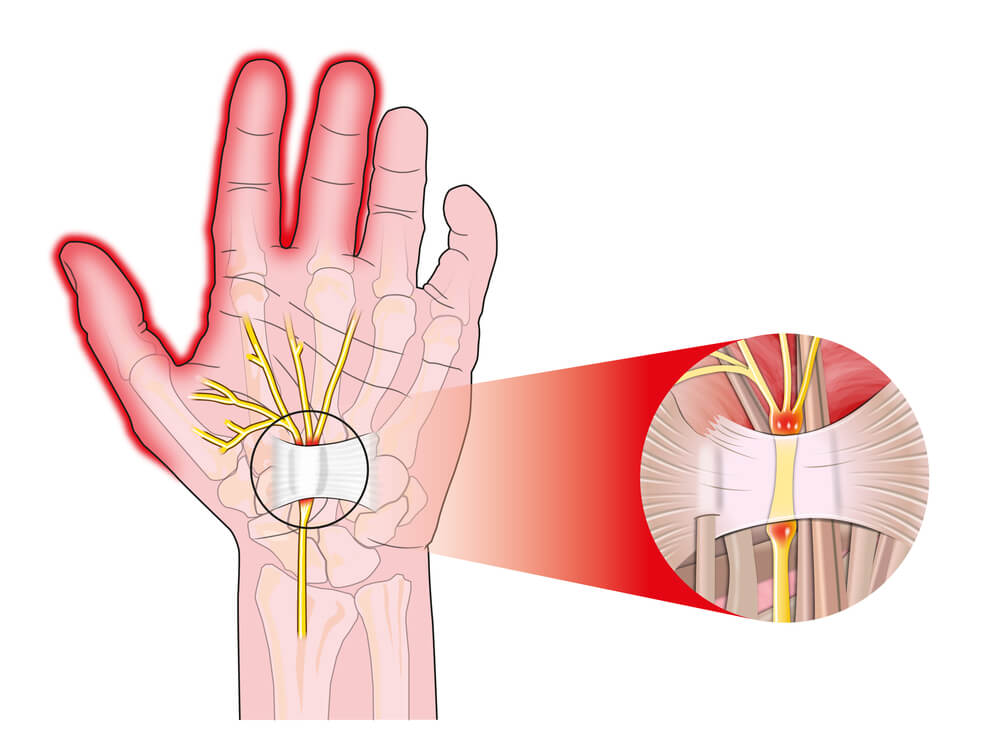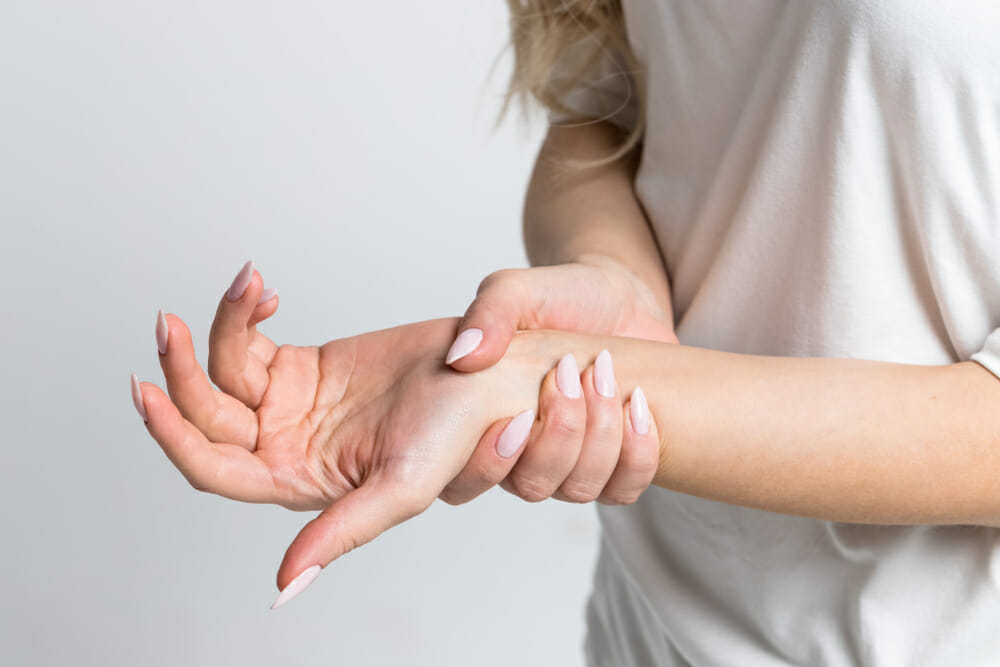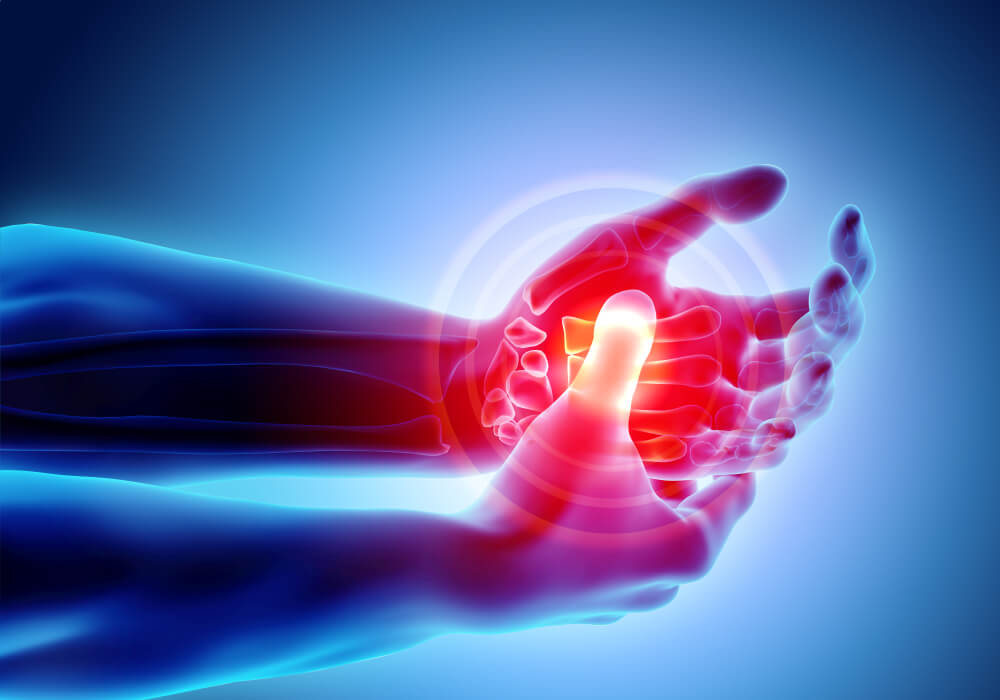
What Is Carpal Tunnel Syndrome?
Carpal tunnel is caused when the median nerve which passes through the wrist becomes compressed. This nerve is responsible for the sense of touch in the thumb and the majority of the next two fingers. It also controls some of the movement in the hand muscles.
The median nerve runs from the spinal cord, down the arm and through a narrow passageway in the wrist called the carpal tunnel. The carpal tunnel is just big enough for the tendons and nerves to pass through. When the tendons become inflamed, there is less space for the nerve and it becomes compressed and irritated.
There are many reasons why the tendons or nerves are caused to become larger, or the tunnel smaller, which results in carpal tunnel. Some common causes of carpal tunnel syndrome include:
- A wrist injury, such as a fracture or sprain
- Overuse of the hand or wrist
- Tendonitis
- Rheumatoid arthritis
- Diabetes
- Hypothyroidism
- Fluid retention during pregnancy
- A cyst or tumour in the carpal tunnel
- Kidney disease
Sometimes there is no obvious cause for carpal tunnel. However, women over 40, people with arthritis, being overweight and those who work in jobs which use the hand repeatedly have a higher risk of developing carpal tunnel syndrome.

What Does Carpal Tunnel Feel Like?
The compression of the median nerve causes a variety of symptoms. Some of the common symptoms you may experience in carpal tunnel syndrome include:
- Numbness or tingling in the fingers or palm of your hand. Usually in the thumb and next two fingers.
- Nerve pain in your hand and wrist. This may spread to your arm or fingers.
- Hand weakness, such as a weak grip.
- Finger swelling.
The symptoms of carpal tunnel are usually worse in your dominant hand; however, both can be affected. For some people, they can slowly lose strength and movement in their hand or wrist. It’s important to seek proper diagnosis and treatment if you think you have carpal tunnel syndrome.
How Do I Treat My Carpal Tunnel Syndrome?
Initially your symptoms will be accessed to determine if you have carpal tunnel syndrome. Other tests may be requested to rule out any associated cause, such as arthritis or fractures. Treatment for carpal tunnel will depend on the cause. Some of the treatment options include:
- Specific treatments related to medical conditions, if this is the cause
- Ice, elevation and massage
- A wrist brace
- Avoiding activities that aggravate the symptoms
- Anti-inflammatory medications
- Corticosteroid injections
- Physiotherapy
- Surgery
Is Surgery Recommended?
Surgery for carpal tunnel may only be necessary when other forms of treatment don’t provide relief. Surgery usually helps to reduce symptoms, or even make them go away completely. However, it has its risks.
Surgery for carpal tunnel syndrome involves cutting the fibrous band on the inside of the wrist. This reduces the pressure on the median nerve. Although surgery can make the symptoms go away, it usually isn’t necessary, particularly in the early stages. Surgery is usually only considered when symptoms keep returning and problems increase despite trying other forms of treatment.
What Are Some Tips For Avoiding Carpal Tunnel?
Carpal tunnel syndrome is often caused by overuse and repetitive activities that result in inflammation. Reducing the risk of carpal tunnel can be done by adjusting your routines and reducing strain on your hands and wrist, such as:
- Alternate between activities
- Reduce repetitive hand movements
- Keep wrists straight, or in a neutral position
- Adjust your desk, chair and keyboard so that your forearms are level with your desk
- Avoid holding objects the same way for long periods
- Wear a brace at night to keep the wrist straight
What Are Some Carpal Tunnel Exercises?
- Wrist Bend – Rest your arm on a table with the arm pointing up and wrist straight. Gently bend your wrist forward at a right angle and hold for 5 seconds. Straighten your wrist and then bend backwards for 5 seconds. Repeat 10 times.
- Wrist Lift – Place your palm on the table and lift fingers slightly. Place your other hand across the knuckles at a 90-degree angle and push down as the bottom hand tries to pull up. You should feel your forearm muscles contract. Swap hands and repeat the process.
- Wrist Flex – Place your arm straight out in front of you with your palm facing down. Use your other hand to gently bend your wrist down, stretching your hand towards your body and hold for 15-30 seconds. Straighten and then bend your hand in the opposite direction, pulling the fingers back.
Is There A Cure For Carpal Tunnel Syndrome?
The majority of people with carpal tunnel syndrome can be effectively treated using physiotherapy. Your Perth physiotherapist will provide advice on modifying activities and the workplace, such as task modification, movement variation and taking sufficient rest time. Physiotherapy may also involve manual therapy techniques which include mobilisation of soft tissue, median nerve and the carpal bone. Physiotherapy will help to strengthen the muscles around the wrist to help settle symptoms and prevent a recurrence.
Carpal tunnel syndrome is caused when the median nerve is compressed due to inflammation, injury and some medical conditions. Carpal tunnel causes numbness, tingling or pain, typically in the thumb, index and middle fingers. Sometimes this may radiate up the affected arm. Patients diagnosed early often respond well to non-surgical treatments, such as physiotherapy. Surgery if usually only required in severe cases.



